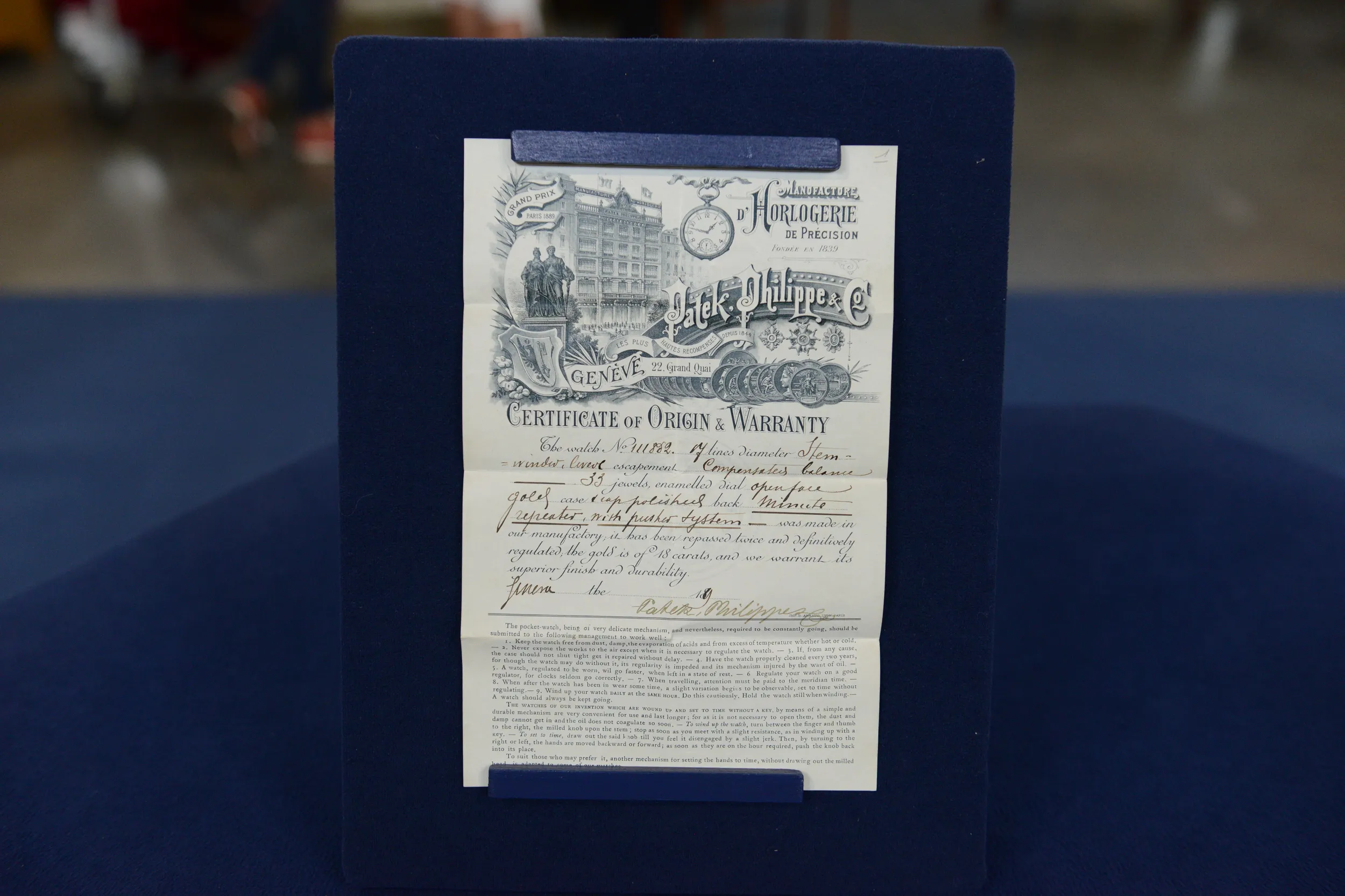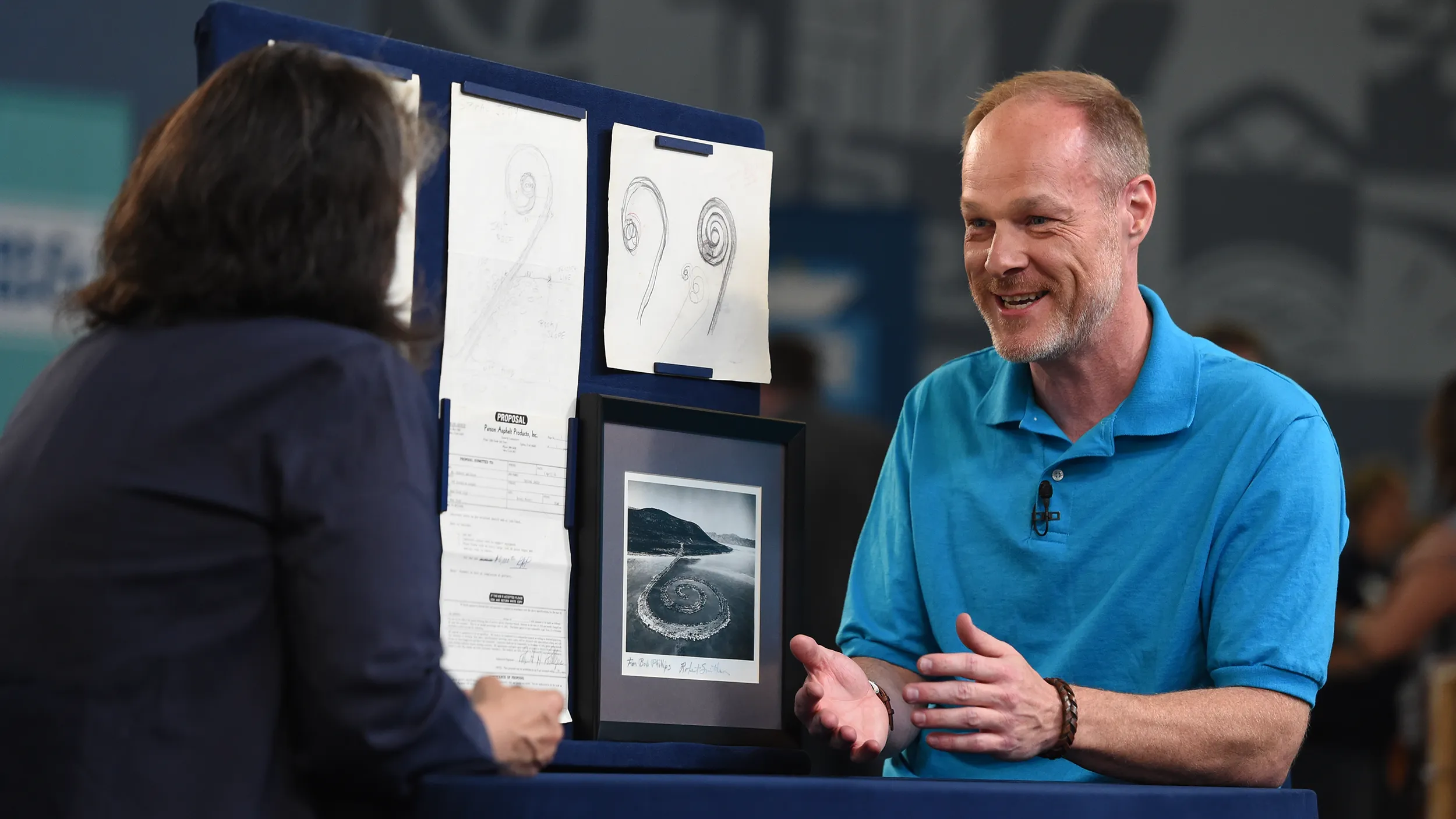GUEST: It was a great-great-great-uncle's watch that passed down through my family to my dad. Each one was an Albert. I'm a Jonathan Albert, and that's why it came to me. It came from Albert Fenn, who was a friend of George Eastman, and he contributed to George's business startup, something called Eastman Kodak.
APPRAISER: Okay. Do you know approximately what year the first Albert got it?
GUEST: It would have been in the 1800s.
APPRAISER: Well, I looked up the date of the mechanism, and it was manufactured in the year 1900.
GUEST: Huh.
APPRAISER: You have the original wooden box for it, which is really great. You have everything, and you also have the original warranty certificate on there. You told me something about when you were a child you were... you had it, or you were playing with it?
GUEST: Oh, I first saw it when I was in elementary school in my dad's dresser, and thought it was pretty cool, and brought it to school to show my friends. And the teacher spotted it and decided that it would be better if he kept it and gave it back to my dad. I never saw it again until he passed away and it came to me.
APPRAISER: And you mentioned to me that you thought that it dinged or something?
GUEST: Yeah, it... if you press the top, it makes a ding sound.
APPRAISER: Okay, do you know why it does that?
GUEST: No.
APPRAISER: Well, what you have here is a Patek Philippe. It's a minute repeater pocket watch. The mechanism is very special on it. It's a two-train movement. It's very unusual. It has two mainsprings instead of one. You wind it in one direction for the time. The second direction winds the repeater mechanism. That dinging sound that you heard is a repeater. And repeaters were originally invented so that they could tell time in the dark.
GUEST: Huh.
APPRAISER: Yours is a minute repeater, which means it will tell you to the minute what time it is. It'll first strike the hours, then the quarter-hours, and last the minutes with two hammers that are located right down here.
GUEST: Huh.
APPRAISER: And they strike on two gongs, and you trip it by pressing the button down on the top. And those hammers will strike. (dinging) And there it is striking the quarters and now the minutes.
GUEST: Huh.
APPRAISER: These are very complicated watches. This movement is of the highest quality.
GUEST: Wow.
APPRAISER: Fantastic piece of machinery, all done without the aid of computers. Let me show you. On the front of your watch, you'll notice that you have black spade hands. These usually came with gold filigree hands. And I looked in your box in the back here, and there's an envelope. And the envelope actually has the serial number of the watch. And in French, it says, "Hands, Louis XV style." I opened them up, and lo and behold, we found the original gold Louis XV hands in here. They turned dark, but they're solid gold, they're rose gold.
GUEST: Wow.
APPRAISER: And so you have the original hands in here.
GUEST: So you think they were never put on?
APPRAISER: I don't know. Originally it came with the watch, for sure. Perhaps they were difficult to see, and one of the relatives wanted darker hands that were easier to read, so the spade hands were put on. Going back to the value of the watch, you estimated about $1,000 for the gold content. And you're correct. It most likely has about, I would say, $1,200 to $1,400 in gold value. But being that this is a Patek Philippe, it's a very special watch. Now normally a Patek Philippe in a wooden box like this, with the papers, easily worth $5,000 to $6,000. But your watch is a minute repeater, and it's not a normal minute repeater-- it's a trip-minute repeater. So your watch today could easily, in today's market in auction, be sold for $35,000.
GUEST: (gasps) Wow. (laughing) Wow. That's... (exhaling) Wow. (voice breaking) Excuse me. Amazing.
APPRAISER: I'm glad your teacher took it away from you in school. And if you're going to insure this, you need to insure it for about $50,000.
GUEST: Wow. (chuckling) Oh, thank you.









